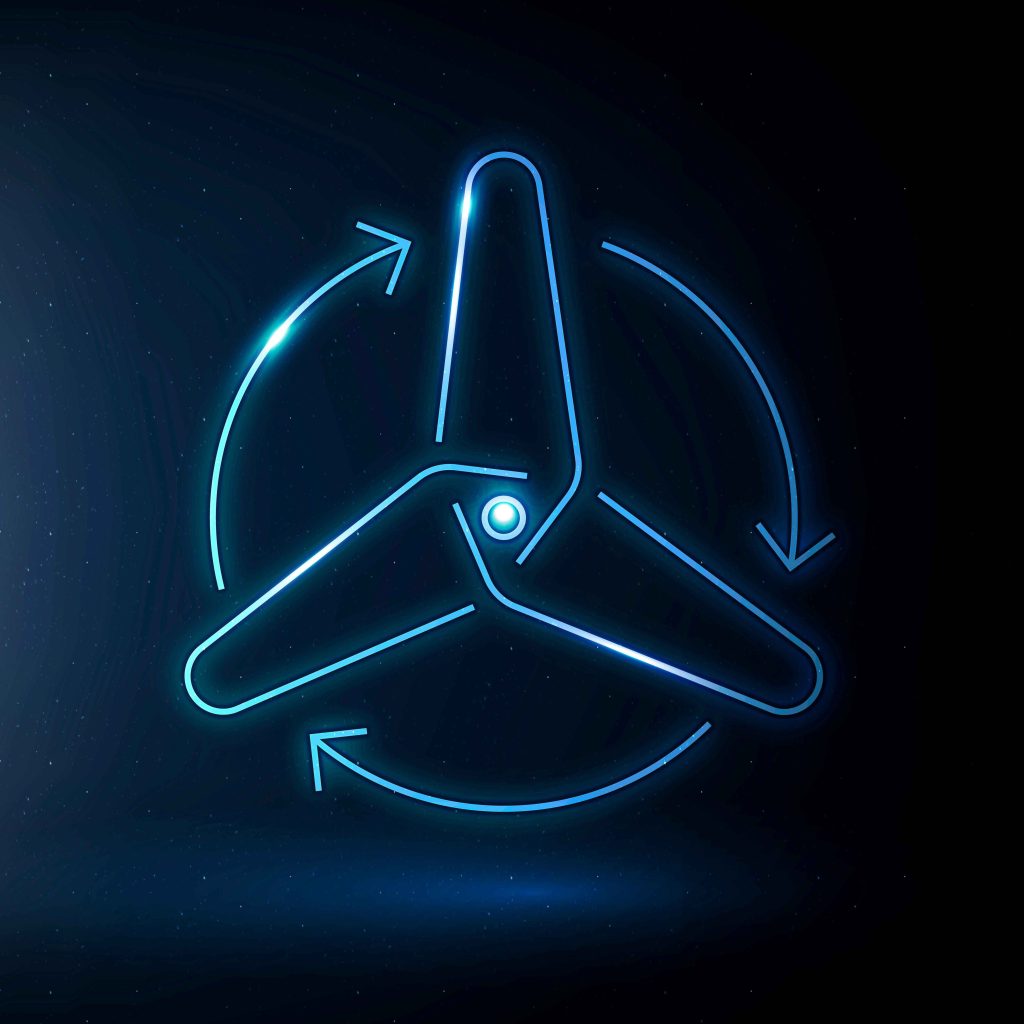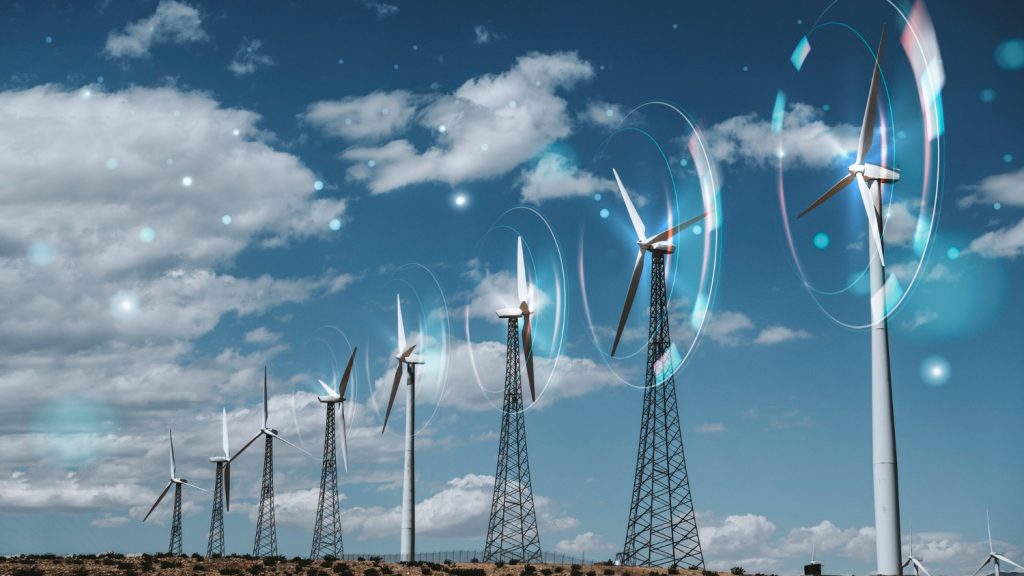In the last section, we explored the inner workings of wind turbines’ work to turn kinetic energy into electrical energy. One critical part we measure is how fast the blades turn, counting every complete spin as one revolution. This speed is recorded in RPMs, or ‘revolutions per minute.’

Revolutions Per Minute (RPM) is the number of turns an object spins around a single axis point in one minute. Propellers, Wheels, Gears, and even engines can all be measured in RPM. In our next activity, we’re going to calculate how many revolutions and how long it takes for our wind turbine to power a neighborhood or city.
Why are RPMs important?
The faster the turbine blades are moving, the more revolutions per minute the turbine will be able to complete. The higher the RPMs, the more power the turbine will be able to produce. As we’ve learned, turbines require wind in order to produce electricity, but the wind is not always consistent. Let’s take a look at one of the features on a wind turbine that helps adapt to changing wind speeds.
Let’s take a look at a Wind Turbine’s Pitch System. The Pitch System controls the turbine blades’ angles to optimize wind capture and regulate RPMs. If the blades angle too much, they could spin too fast; or even too little. In strong winds, the system pivots the blades sideways in a ‘feathering’ motion, reducing spin and preventing damage by keeping RPMs at a safe speed.
